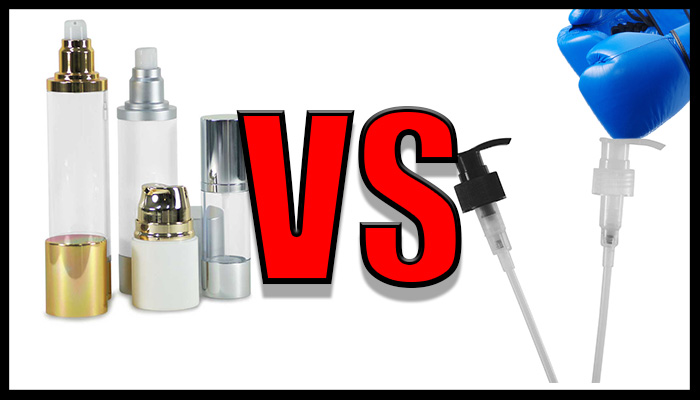
Pump Dispensers
Most common pump dispensers are basically comprised of a dip tube, a pump body, or tank, a piston, a stainless steel spring, and an actuator placed inside a rigid container. In addition, there may be one or two check balls to prevent liquid from flowing out of the pump body back into the container, and from flowing back into the pump body from the piston and actuator. When the actuator is depressed to dispense the product, the pressure in the tank is increased, causing liquid to flow through orifices in the piston and out through the orifice in the actuator. At the same time the actuator is depressed, the stainless steel spring is compressed. When the actuator is released, the spring provides the force to restore the actuator to its original position. As the actuator and piston move up toward their original positions, a slight vacuum is created in the pump body, which allows the check ball to lift up off its seat, and allows another dose of liquid to fill the pump body. Simultaneously, as the actuator and piston move up, channels are opened that allow outside air to enter the container. This air replaces the volume of liquid drawn into the pump body, thereby preventing the build up of a partial vacuum that would prevent further dispensing from a rigid container. Obviously, traditional pump dispensers are not anaerobic— that is, the product is always in contact with air.
Airless Systems
In so-called airless systems, the product is isolated from the air. In addition, the dosage expelled with each stroke of the actuator is approximately equal to the amount of product contained in the pump body. Thus, this is not a system that will dispense continuously while the actuator is held in the down position. There are several forms of airless systems. However, in this context it is important to note that by the term airless, we mean that the product is separated from the surrounding air by a barrier that prevents its ingress. “Airless systems offer increased stability and shelf life, as well as increased rate of restitution that traditional packages don’t typically offer. Another advantage with airless packs is that consumers can dispense the product in any position,” explains Jan Wilson, vice president of development for TaikiUSA, Inc. The company has recently added airless products as an extension of its liquid dispensing category, currently focusing on airless tubes and airless pump tubes with plans to soon expand product offerings. However, despite benefits, sometimes the choice of airless packaging comes down to pure necessity. “Given the increased interest in lower preservative formulations and paraben-free options, airless systems can then become necessary packaging considerations,” Wilson adds. Not all brands choose airless for purely functional reasons, however. There is also a branding component to the dispensing system. Today’s airless systems “communicate to the customer brand prestige and increased value. Like most packaging, it is a matter of scale as to whether or not the higher cost of an airless package for purely esthetic purposes justifies the investment,” says Michael Daum, director of sales and marketing for personal care packaging supplier VPI.
Do I Need This?
With all of the buzz surrounding airless packaging, brands still using traditional dispensing methods may wonder if it’s time to jump on the airless bandwagon. Trout offers this checklist of questions for brands wondering if now is the right time to switch: Is your current pump performing? If it is, Trout advises a closer evaluation of whether you are using the right pump for your formulation. A switch to airless won’t help performance if the pump you are using does not work with your product. Is the consumer able to dispense the entire product? “If your formulation has a higher viscosity or sheer rate, then an airless package might increase her satisfaction with your brand and the perceived value she is seeking,” Trout adds. Do you have a competitive threat from an airless package? If a key competitor is transitioning to airless, it may be a good time to further invest in your shelf presence. Trout says brands should consider all options to offer a competitive package, such as more decoration, another packaging format or switching to airless.
Source: http://www.weltradepackaging.c







